How To Train Goats On Electric Fence
This article will help on how to train goats on electric fencing to ensure everyone stays inside and safe.
When looking at different goat fence ideas, training is an important part. Use these tips to stop any attempts at escaping before they begin.
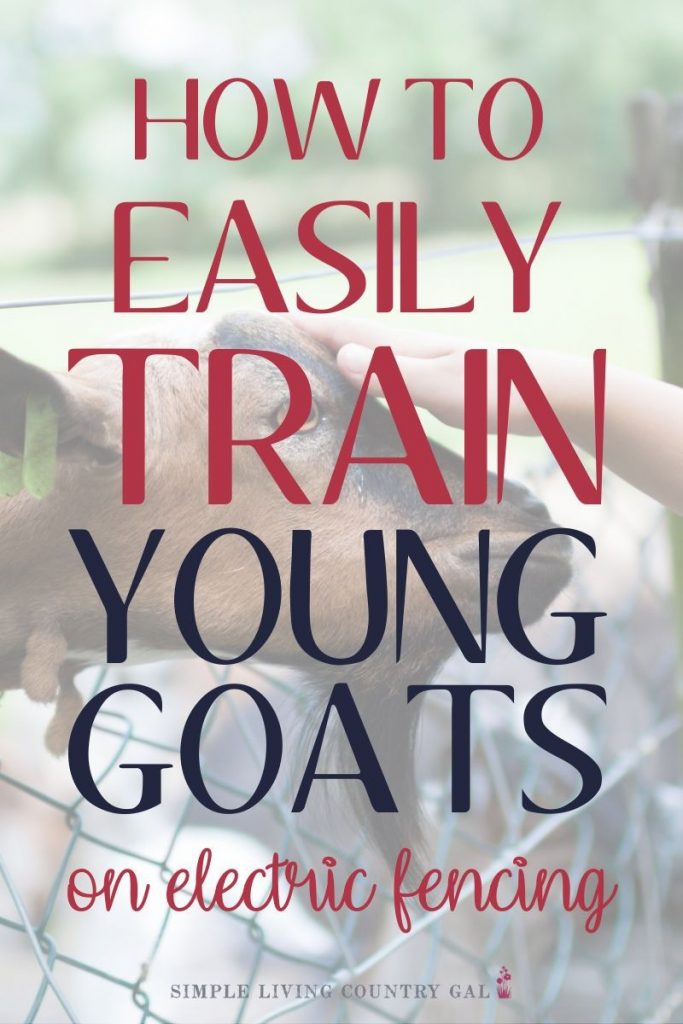
I remember the very first year I had goats. The scariest thing for me was when I had to train goats on the electric fence.
Especially with my young kids, I was unsure how to do it. I guessed and hoped for the best. Luckily none of the little kids got seriously injured that first year, but we sure did have a couple of close calls.
After 11 seasons of kids and new additions to our herd, I have learned how to make things easier for myself and my animals.
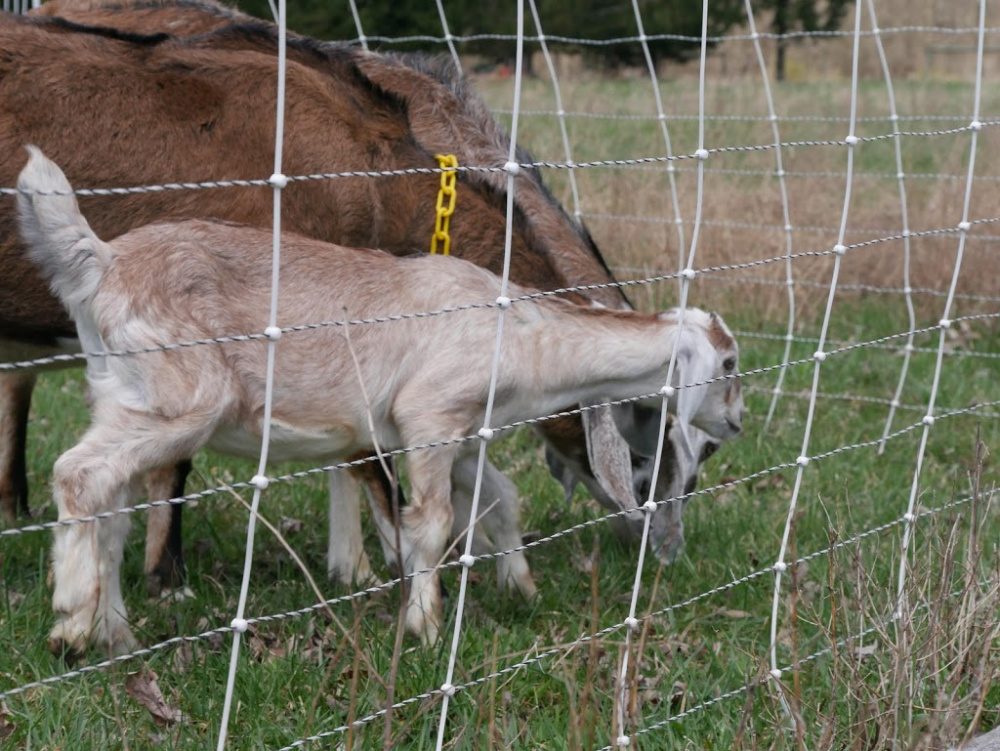
The trick to training a herd of goats is to train the younger kids with the older does. This will help the young kids to learn by example. When they see their mothers stay clear of the fence, they usually do too.
Train Goats on Electric Fence – Tips
Before we get into the step-by-step training, let’s talk about a few things to know and do before you begin.
Grab the FREE Goat Training Guide Below!
How do you keep goats in an electric fence?
The only way to teach your goats to stay on the fence is to teach them what the fence will do. This means they will actually need to get a zap so they understand just exactly what will happen if they get too close.
I know this sounds awful, especially coming from a person that loves their animals but it is the best way for them to learn. Remember, the fence is there to keep your goats safe, and the more you can help them understand that they need to stay clear of the fence, the safer they will be overall.
Tip #1. Have Help
The most important tip I can give is not to do this alone. It takes two people to train goats on electric goat fencing especially if this is your first time. Try to enlist a friend, spouse, or one of your kids to help out.
The reason why is to ensure that none of your goat kids try to run through the fence risking getting tangled up and receiving a constant zap. The more eyes you have watching your herd, the less stressful it will be for everyone involved.
Tip #2. Pay Attention
When a goat gets zapped on a fence, it’s their nose that usually gets the “hit” first. This is actually what you want to happen. The design of the electric netting, for example, attracts animals to come and check it out. When they do, they will get a shock on the nose that is painful but not life-threatening.
More often than not, when a goat gets a zap on the nose, they will jump back and run the opposite way (yelling the whole time!). However, there are a few goats, especially young goat kids, that panic and run FORWARD through the fence.
If you use fence netting, there is a chance that they can get stuck in the opening of the netting, continually getting zapped until they can pull free.
This is where having an extra person is crucial. Stage your helper next to the power so during training if there is an issue, that person can shut things off quickly so you can go and untangle your goat if needed.
Tip #3. Let the Zap Happen
For a goat to truly understand the fence, they need a “zap.”
Never EVER force your goat to get shocked. Do not carry them over to the fence and zap them. Instead, let it happen naturally. Be patient and let them approach the fence on their own.
Allow them to get it on their own time. This will do more good for training purposes in the long run.
Tip #4. The Nose is Where It’s at
The most sensitive part of a goat is its nose, so if they touch the fence with another part of their body, the zap will not be as effective. Don’t worry if this happens, goats are very curious, especially young kids. They will test everything with their noses first. A quick zap on their little nose is usually all you need for a lifetime of training.
Read: Goat Fencing 101 for other fencing options.
Tip #5. Not Everyone Needs to Get Zapped
Not all goats need to be zapped. If you have a follower goat that is timid and shy, then you do not necessarily need to zap them to train them.
Those goats will stay back with the herd following their lead.
There have been many years when just one of my goat kids got zapped and the rest learned from that.
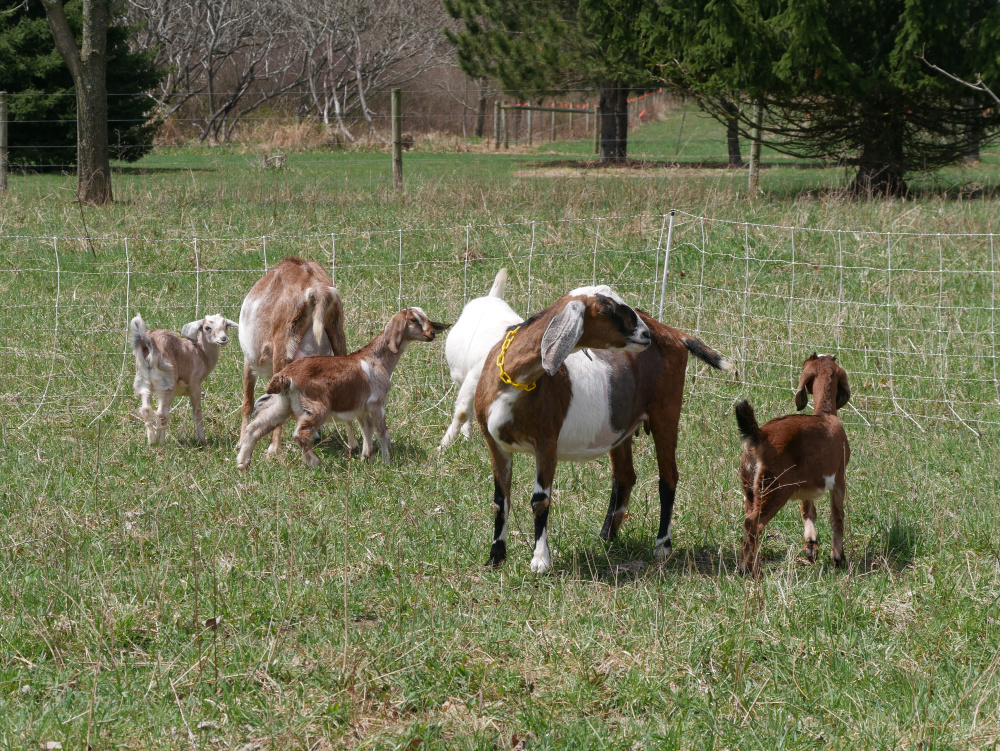
Tip #6. The Stubborn Goats
Stubborn goats may need more than one zap. Some goats may even require up to 4 zaps to get the point.
Don’t worry. It doesn’t do permanent damage. It’s just a sting that goes away as soon as contact is stopped. Trust me; I tend to get zapped a few times each year. Yes, it stings, but it doesn’t last.
The fences are meant to keep animals safely inside, not to harm them. Please do not worry that you are causing unnecessary pain to your animals. What you are doing is keeping them safe.
Tip #7. Fence Upkeep
Always keep your fence line trimmed and neat so the currents run smoothly. I cannot stress enough the importance of this. Have this chore on your monthly to-do list to ensure your fence never loses current.
Remember, you are not just keeping your livestock in, but you are keeping predators out as well. Deer are notorious for entering into pastures, and if they do, they can infest your herd with Barberpole worms.
What are Barber Pole worms?
Barber Pole worms are a dangerous roundworm parasite that affects ruminants. It has a very high mortality rate both in goats and sheep.
White-tail deer tend to have a high rate of these worms and they spread the eggs in their feces as they walk through grazing pastures. Goats on the infected pasture have a higher likelihood of infection.
Barber Pole worms settle in the fourth stomach of ruminants and suck the blood of their host as nourishment. Symptoms include pale eyelids and/or gums, lethargy, bottle jaw, and unexplained weight loss.
Having pasture management, and a secure and effective fence, both work hand in hand at keeping your entire herd safe.
Tip #8. Do Not Force it
Never EVER force a goat to get zapped. I know some owners that carry their goats to the fence and zap their noses. This does absolutely nothing beneficial for you or your herd.
Sure, this approach will show the goat that the fence does hurt, but you did it on your terms and not theirs. Allowing your goats to get zapped naturally helps them to learn with the least amount of trauma.
How to train your goats on an electric fence.
Okay, let’s break this down into steps to help both you and your herd get through this process with the least amount of trauma.
Step #1 Always have at least two people.
As I said before, this is a tip I learned the hard way. Have someone near the electric source at all times so you can quickly shut off the electric current if any of your goats get stuck in the fence.
Have your extra person stand near the electric source or solar box, ready to disconnect if needed.
The goal here is to train your goats and not to hurt your goats.
Step #2 Let the goats out.
You can either do this one by one or in a group. I prefer training in a group. Since goats learn by example, seeing other herd members get shocked is usually enough to keep them all away.
As long as you have enough eyes to watch everyone, I encourage you to train as a group.
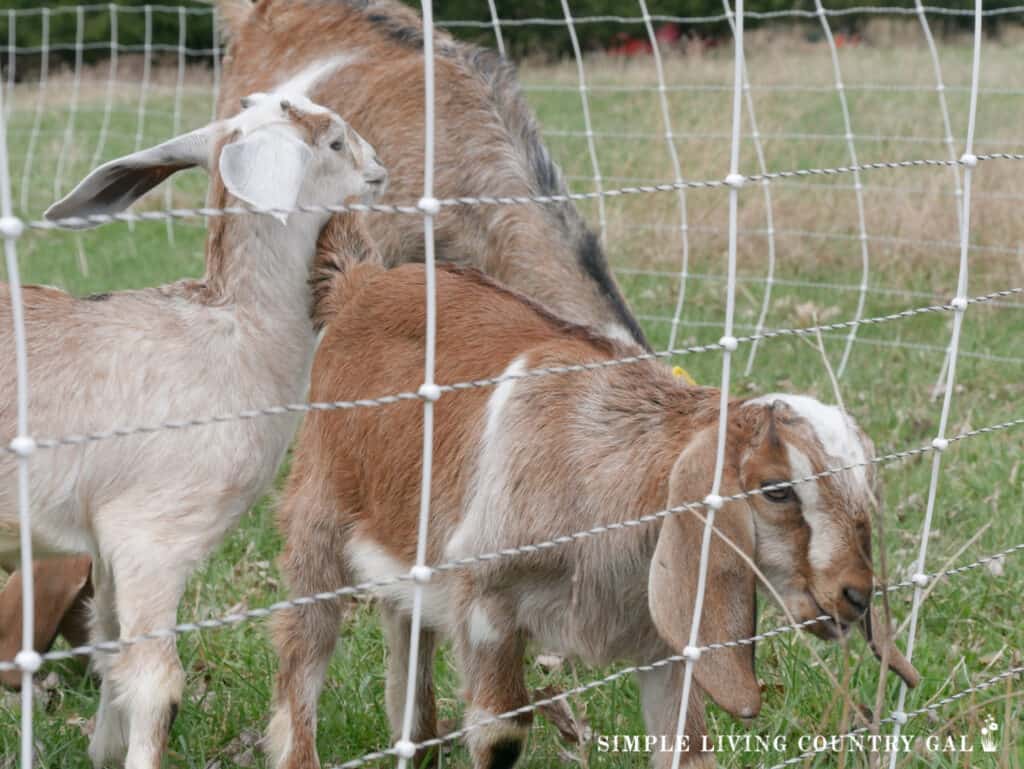
Step #3 Give them time to explore.
It is important that you do not rush the training.
Let your goats take their time and check everything out.
Goats are very curious animals, and it usually will not take long for them to “test” the fence. Just sit and let them decide when they want to come closer to inspect the fence.
As I mentioned above, the electric fence netting attracts the goat’s interest, and their curiosity will get the better of them. As they approach the fence, do not stop them.
Your goal is to teach your goats to respect the fence, and to do that, they need to associate the fence with the pain of a shock.
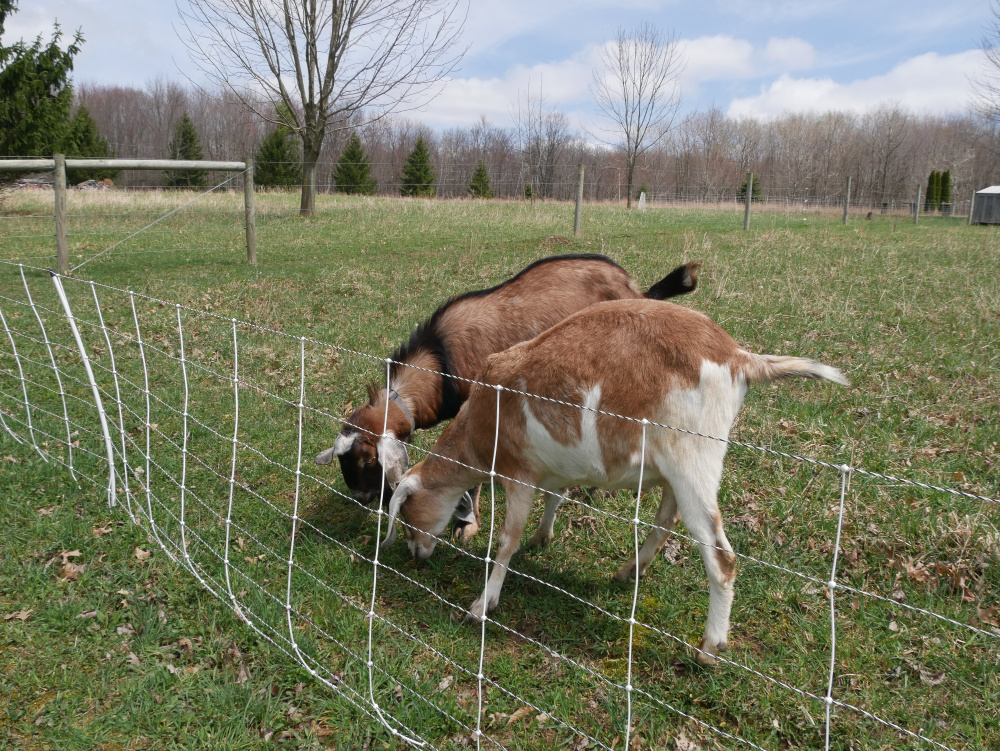
Step #4 Let the “zap” happen.
If you are new to animals, this can be easier said than done.
Watching your babies get hurt is never enjoyable, but I assure you the zap is a crucial step in keeping your herd safe.
Goats learn quickly, and if you teach them to respect the fence, you should never have an issue with breakouts.
Also, the zaps I am talking about are not life-altering ones. I have been zapped many, MANY times(more than I care to admit), and yes, it does sting but not too badly.
Step #5 Once isn’t always enough.
I had a goat once that could not stay away from the fence. I swear she truly believed the grass was greener on the other side. I think she was zapped four times before she finally understood to stay away from that fence.
But you know something?
I never EVER had that goat break out of our pasture. She was well-trained and understood the fence was something to stay away from.
Step #6 Lure and test.
This may sound mean, but it is an important part of training your goats.
Have someone on the other side of the fence to “tempt” the goats a bit. This will show you and them if they are truly trained.
A sharp “no” will usually remind them if the goats come close to the fence. But be prepared for the goat that will not listen and allow them to get a little zap on its nose for getting too close.
Step #7 When the electric fence netting doesn’t work.
This is going to be hard to hear, but if you have a goat that cannot and will not be trained on an electric fence, you may need to rethink things.
If one goat insists on breaking out of your pasture, the others will surely follow. Stopping problems before they can happen is usually best. If you have a goat that breaks out repeatedly, you may need to find other housing for that goat or find a new home altogether.
The safety of your herd should always be first and foremost.
If that means letting go of one goat for the benefit of the others, you may need to think about that.
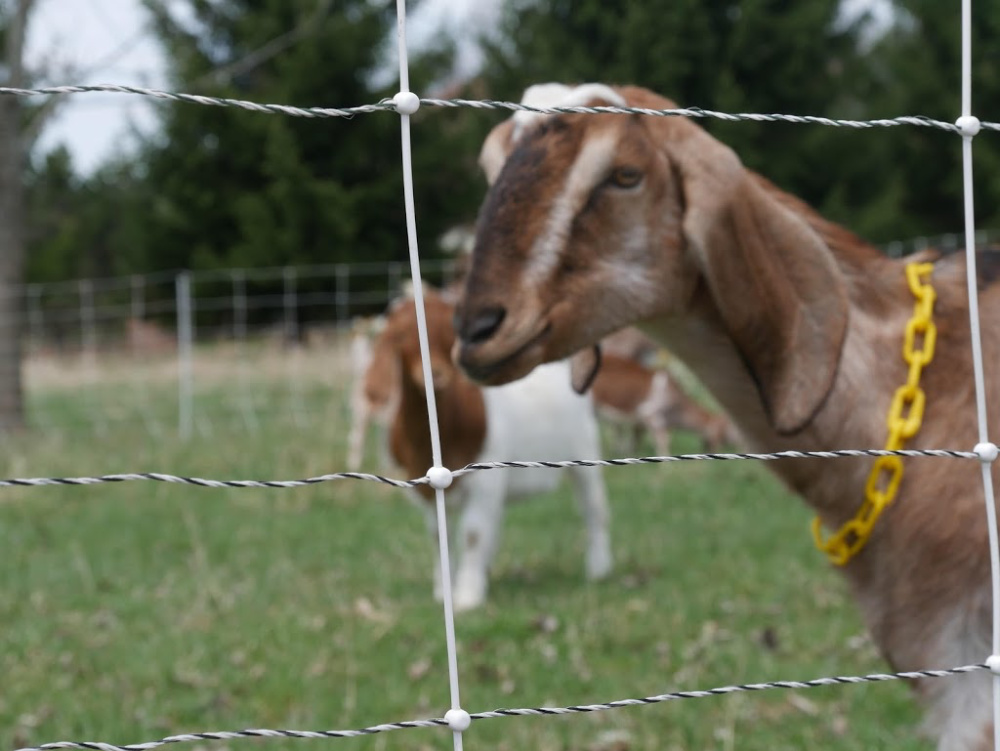
Step #8 Repeat each spring.
If you live in an area with four full seasons, it is important to know that electric fence netting will not be effective in snowy climates.
If you house your goats outside in winter weather, just be sure they are trained thoroughly on the fence, and they will stay away even if it is off.
If you bring your goats into a barn or other shelter during the winter months, you may need to do a refresher course come spring.
My older goats seem to stay trained year after year. The younger does, however, do need a refresher course each spring. Again, one shock usually does it.
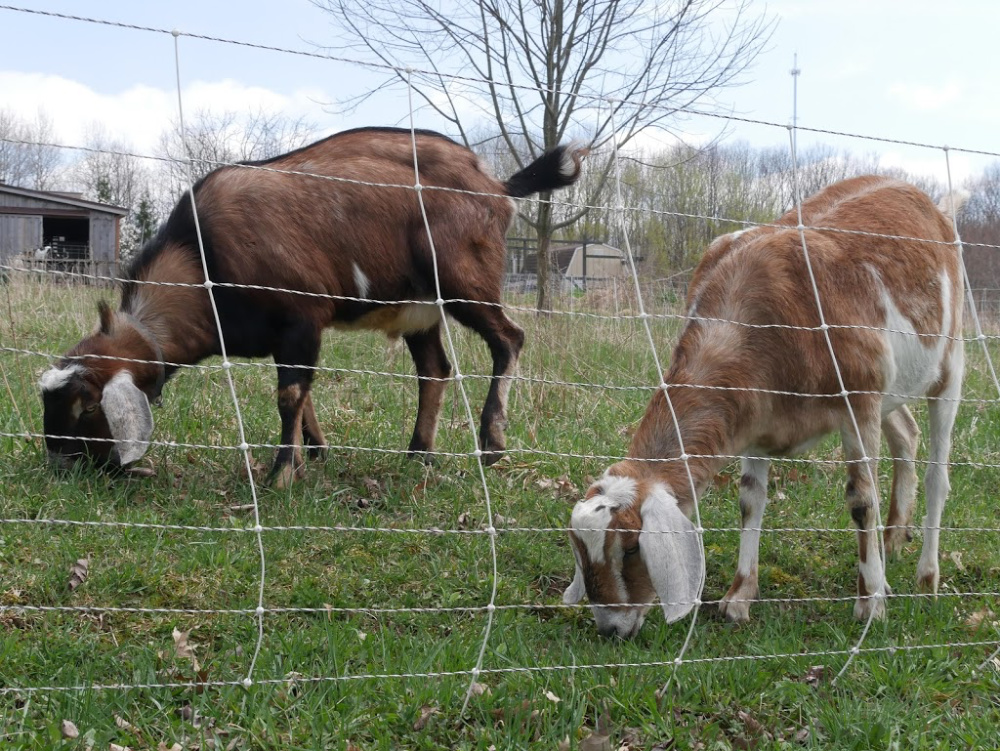
Learning how to train your goats on electric fencing correctly will help in more ways than one.
Knowing you can safely and securely leave your animals out to pasture will give you and your goats more freedom. Take the time to train your livestock effectively so you can give them the freedom to roam and graze.
Do you have tips on how to train goats on electric fence netting? If so, please share below!

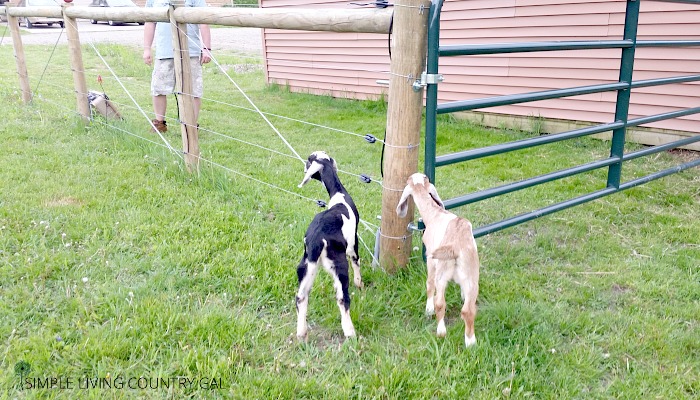
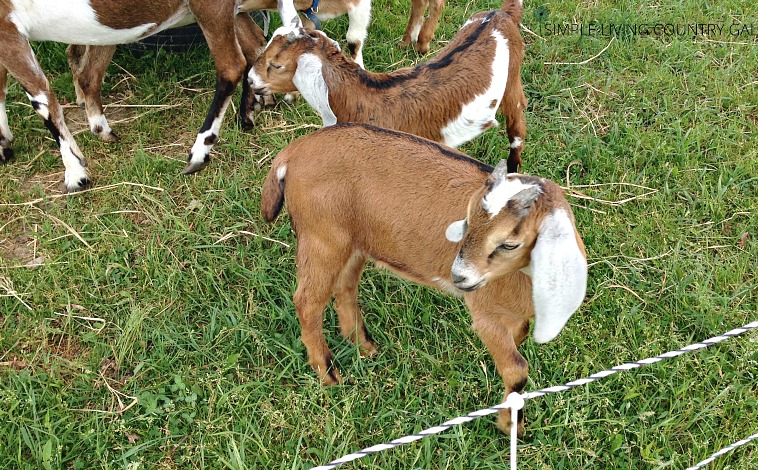
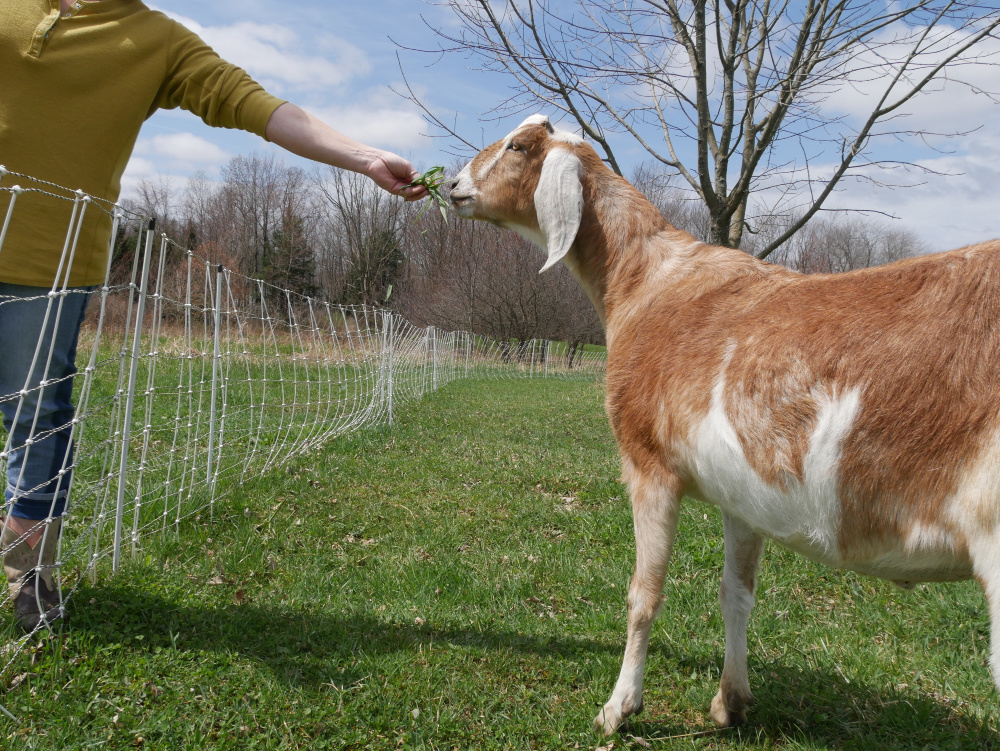
Hi thanks for the great post! I am looking to purchase similar fencing, do you recall the brand you use?
Hi, Kim!
I use Permier1 Fencing that you can find on Amazon or at their website (which is where I purchase it from) that you can reach HERE.
I hope this helps!
Tracy Lynn
I know this is an older post, but still very helpful. I’ve got 4 baby goats (10 months old, so not really babies lol) and 2 older does. One of my older does constantly tries testing the fence. Her goal every day, I think, is “How can I get out of wherever she puts me all I can drive the mistress (me) crazy!!
I do not have the electric netting. I just have the wide white horse electric fencing tape. How many strands do you suggest I use, and at what heights? My goats are Nigerian Dwarf, so they’re a small breed.
Thank you.
Lisa Scott
Almost Heaven Homestead
Wayne County WV
Hi, Lisa!
Our lowest strand is about 11 inches from the ground, and that worked fine with our Nubians when they were young. The bad news is, trimming the grass below was a bit difficult. It’s a give or take and one to keep in mind.
I have found that it just takes one zap to deter most goats. There is always that one that needs a bit more reinforcement.
Tracy Lynn
Clearly this is for the moveable netting fencing, and not the smooth wire permanent electric fence. I know that goats are far more prone to try to get out of a fenced area, but when I had cows, the entire place was electric fenced, with 3 separate pastures, all electric. When I would open a new pasture, the cows would all walk the fenceline, just once, and then they would kick and buck for the new grass, but would not test the fence or try to get out (probably as they ate better and more than I did!!)
I don’t think it would be necessary if you have the permanent fencing, as animals can sense the hot wire and won’t try to escape. At least my cows didn’t for the most part.
I did have cows I pastured for friends, that would escape. One particular cow with calf actually had to be put down as she got out and terrorized the neighbors and after an all nighter trying to get her back (the calf actually did come back) they had to shoot her…very sad.
Yes, I do believe cows are different whereas goats will do anything they can to get on the other side of any fence. They can easily jump and clear a 5′ fence without thinking twice. I have my goats in electric net fencing and pasture permanent fencing as well, we do have our lowest strand closer to the grass to keep our smaller goats inside.
Sorry to hear about the cow and calf…how sad!
TracyLynn